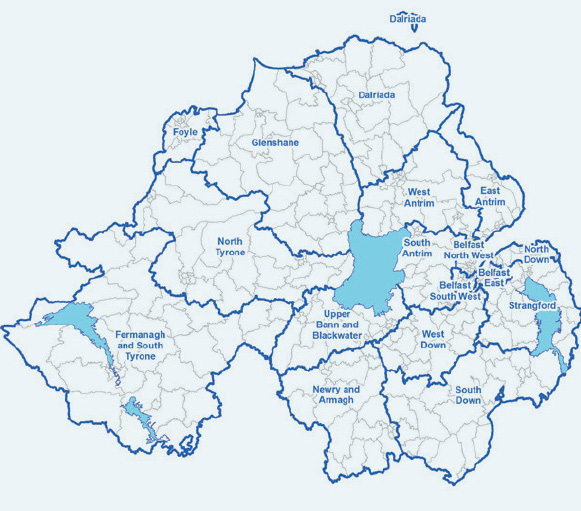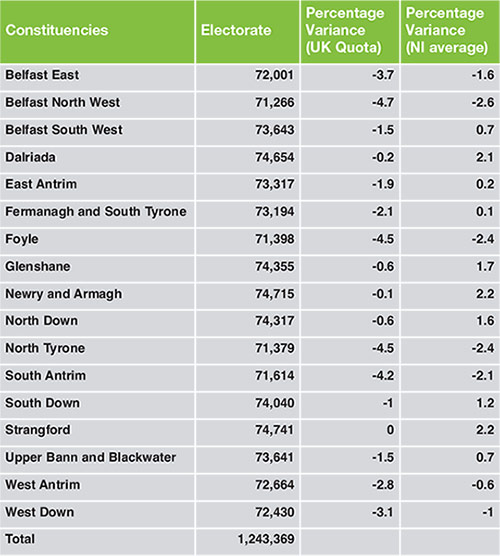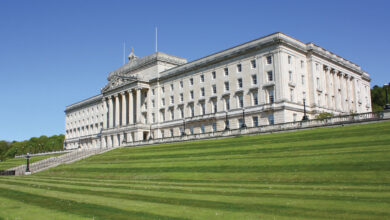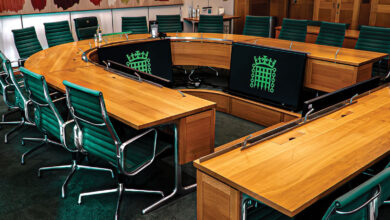Constituency changes abound

The Boundary Commission for Northern Ireland has proposed a series of provisional recommendations which, as they stand, will impact upon every constituency in the North, reducing their total from 18 to 17.
The Parliamentary Voting System and Constituencies Act (2011) requires that Northern Ireland’s electorate (1,243,369 people at 1 December 2015) be divided into 17 constituencies, utilising complete local government wards as building blocks. The electorate of each constituency must also be within a 5 per cent variance of the UK electoral quota of 74,769. Constituencies, therefore, are obliged to contain electorate ranging from no less than 71,031 and no more than 78,507 people. While four existing constituencies fall within these electoral population ranges (Lagan Valley, Newry and Armagh, North Antrim and South Down), all constituencies require adjustment in order to facilitate the May 2014 ward boundaries and the reduction.
Constituency names
The Commission intended to retain the names of constituencies which are adequately similar to their existing geographical boundaries. If this was not the case, then county names were used. In three cases, however, this was no longer appropriate.
Outside of Belfast, the constituency names of East Londonderry, Mid-Ulster, West Tyrone, Lagan Valley and North Antrim will be confined to history. Glenshane, Dalriada, North Tyrone, West Down and West Antrim will emerge in their place. Similarly, Upper Bann will transform into Upper Bann and Blackwater, in recognition of the constituency’s assimilation of a region which incorporates a second major river. The remaining eight non-Belfast constituencies will retain their current titles.
Of the political parties, Sinn Féin appears to be the main potential benefactor. Likewise, Alliance looks capable of staging a revitalised challenge in the newly defined constituency of East Belfast (all of the City of Belfast east of the River Lagan), which has acquired much of South Belfast while also losing traditionally unionist heartlands such as Dundonald. The remaining half of the City, west of the Lagan, will be split in two to produce Belfast North West and Belfast South West. Due to the geographical barrier of Belfast Lough, ward transfers between constituencies were only possible between North and West; West and South; and South and East.
The bulk of County Down finds itself partitioned into four constituencies, three of which (North Down, South Down, Strangford) remain broadly the same, while Lagan Valley and areas of Upper Bann will be subsumed by West Down.
The vast majority of Newry and Armagh will remain unchanged, with only two wards, Blackwatertown and Loughgall, transferring to Upper Bann and Blackwater. Elsewhere the constituency will expand into Mahon and diminutive changes will be made in order to facilitate ward boundaries.
Upper Bann and Blackwater will face significant geographical changes after ceding much of its traditional hinterland to South and West Down. It will then be brought up to electorate quota by extending westwards as far as to encompass the wards of Caledon, Coalisland North and Washing Bay.
West of the Bann
Foyle remains almost completely unchanged aside from a slight expansion which will see the constituency embrace the Slievekirk ward in its entirety as defined in 2014.
The remaining region west of the River Bann is then proposed to be split three ways. Fermanagh and South Tyrone will transfer out seven wards on the east Tyrone side of the current constituency and, along its northern border, absorb eight wards from West Tyrone. The remaining wards of County Tyrone, including those surrounding Omagh, Cookstown and Strabane, will form the North Tyrone constituency. Glenshane will incorporate all of County Londonderry aside from 12 wards in the Coleraine area and the wards surrounding Derry City.
In the northeast, a total of four constituencies will also roughly correspond with traditional County Antrim boundaries (excluding the City of Belfast, but including Coleraine). North Antrim, which will extend northwards to include a further 12 wards, will be known as Dalriada (assuming its name from a former Gaelic kingdom which incorporated large swathes of western Scotland and the tip of north eastern Ireland – Dál Riata). East Antrim, which includes Carrickfergus and Larne, will move southwards and transfer in six Belfast wards which fell beyond the City boundary. South Antrim will transfer out 15 wards to the new constituency of West Antrim and receive seven former Lagan Valley wards. The constituency’s main towns will include Antrim and Lisburn. The new West Antrim constituency is proposed to run east from the Bann to Ballynure and south from Slemish to Carnmoney, with Ballymena on its northern boundary.
The Commission’s recommendations effectively ensure that all constituencies fall within the UK quota parameters, ranging from 4.7 per cent below to equivalence. Electorates range from 71,266 in Belfast North West to 74,741 in Strangford. All proposed constituencies also range within 3 per cent of the Northern Ireland electoral average of 73,139 (established by dividing the total electorate by the number of constituencies).

Party outlook
The four-way dissection of South Belfast will cause a headache for the SDLP after the dogged fight to retain the seat in 2015. The marginal constituency of Fermanagh South Tyrone, will cede Dungannon and instead gain nationalist-majority wards across the west of Tyrone, provoking concerns for the UUP. The DUP are set to remain strong in their heartlands east of the River Bann.
With the amalgamation of several West Belfast wards and North Belfast in the new Belfast North West constituency, Sinn Féin may be better poised to threaten the DUP’s long-held position there. The loss of Coleraine from the traditional East Londonderry constituency and the inclusion of Magherafelt also has the potential to produce a shift in Glenshane. Meanwhile, in North Down, Independent Sylvia Hermon has little cause to be troubled by an influx of several Lisburn and Castlereagh wards.
The Boundary Commission’s findings may have more radical implications for parties during the next Stormont election when Assembly seats are thinned from 108 to 85.
The Commission’s proposals are provisional and open to public consultation. However, it is anticipated that, beyond minor alterations, the recommendations will remain as they are. Any counter-proposals will face the complexity of transferring complete wards between constituencies while maintaining ‘local ties’ and adhering to the tight quota range. The Commission must submit its final report to the Secretary of State for Northern Ireland before October 2018.
The proposals will then be voted on in the House of Commons. While the legislation can, theoretically, pass without support of Northern Ireland MPs, it is uncertain on how effective the Government whip will be, with MPs voting to eliminate some 50 of their own seats.





